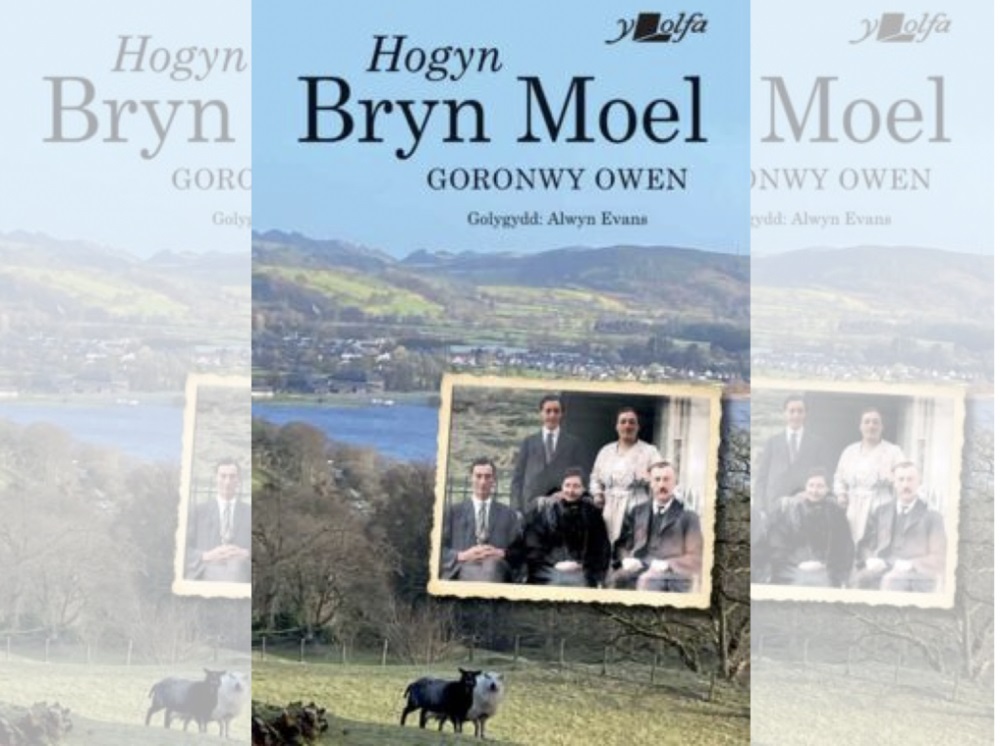Book review: Hogyn Bryn Moel

Jon Gower
When the author of this book of countryside reminiscences was in his nineties he entrusted the manuscript to Alwyn Evans, who soon saw some of the challenges facing him in editing the work such that it might eventually be published. The typewritten pages seemed to have been produced by someone who was almost a complete stranger to the fresh ink of a new typewriter ribbon, therefore making out the words was one of the first hurdles he had to face.
Then there was the fact that the nonagenarian author had changed the names of both the farms and the characters of his childhood, which had this been a fiction would have been matters of little consequence but in a memoir could undermine things. Goronwy had even gone so far as to rebaptise himself, using his father’s name, George, in so doing creating a sort of persona for himself. This renaming was consistent, perhaps with the act of remembering growing up many, many decades ago, and so there had been a real distancing in terms of time even if the memories were vivid and alive. When asked why all the names had been changed Owen, who had once served on the County Council for Meirionethshire rubbed the side of his nose suggestively and said he had enemies!
Edward Goronwy Owen was raised on a farm called Bryn Moel in Llanycil near Bala. In his teens he worked as an agricultural servant to his father, George Monks Owen before becoming a pupil teacher in the local school, going on to Aberystwyth University and finally to Jesus College, Oxford before following a vocational path into the Church. Despite blandishments to remain at Jesus he returned to Wales becoming a curate in Colwyn Bay and Old Colwyn, a vicar in Dyserth and in Glyn Ceiriog, a rector in Corwen and finally a canon in Llandudno before retiring to Llandrillo-yn-Rhos, where he sat down in front of a typewriter to summon up the past.
Second childhood
Hogyn Bryn Moel is very much an account of that second childhood one gets to live with the onset of old age. Born on a cold morning of frost and chill Owen tells us about the narrow, unimaginative school curriculum of his day, where he was taught numeracy, geography, history and writing with the occasional music lesson which helped with learning folk songs ready for St David’s Day.
School wasn’t all about learning. A Magic Lantern show illuminated eager young faces watching the performance. And then there were the holidays, a time to go playing with spinning tops and playing marbles with the round glass corks from bottles of ginger beer. They also made their own stilts, but because people wanted their privacy, didn’t want young acrobats peering through their windows, so nobody was allowed to have a pair which lifted the walker more than a couple of feet above the ground.
Then there was fishing, or, rather tickling trout and when autumn fell playing conkers, with some players roasting the fruit of the horse chestnut tree although some saw that as cheating.
Husbandry
But the book is not really about play. It’s more about work and the daily and seasonal patterns of animal husbandry and working the land – the ploughing, threshing, butter-making, vegetable growing, hay-making and sheep shearing. Goronwy works as a cowman and learns to milk the animals with very little natural skill, working by candle-light before electricity came.
The young Goronwy did sufficiently well in what was then called the ‘labour examination’ to be allowed to leave school at the age of thirteen, in order to help his ailing father on the farm. It also meant he no longer had to walk two miles to school each day. He first works as a cowman and learns to milk the animals with very little natural skill, working by candle-light before electricity came.
Sheepdogs
He also worked with dogs, the law at the time allowing them to have two animals on the farm. He describes dogs that are faithful and skilful and it is easy to see how Goronwy would later become an expert and judge in sheepdog trials. We see Nel accompanying him as he goes out to shoot rabbits as well as the occasional illicit pheasant and find out how adept the other dog, Jol was at working sheep.
The book details the slow introduction of mechanisation into agriculture and conjures up the busyness and centrality of the local fairs, when cattle would be sold on the village street, horses traded in front of the pub, The Ship and pigs were eagerly traded in the square.
We learn about the role of the carpenter in these countryside communities, men such as Richard Thomas who could turn his hand, and his tools to pretty much anything as long as it was made of wood, crafting coffins and trolley wheels or repairing anything that needed the skills of a craftsman who had notably huge thumbs.
This slim volume is a time machine, taking us back to a rural age of great linguistic richness, when everything had its name in Welsh, right down to the individual parts of the plough or the components of a horse collar. In this Hogyn Bryn Moel is an antidote to forgetfulness about the richness of country life, its rituals and demands.
Hogyn Bryn Moel: Goronwy Owen is edited by Alwyn Evans and published by Y Lolfa. It is available from all good bookshops.
Support our Nation today
For the price of a cup of coffee a month you can help us create an independent, not-for-profit, national news service for the people of Wales, by the people of Wales.




